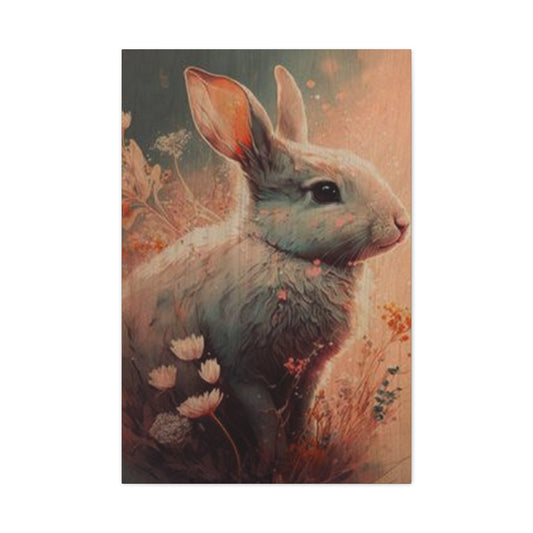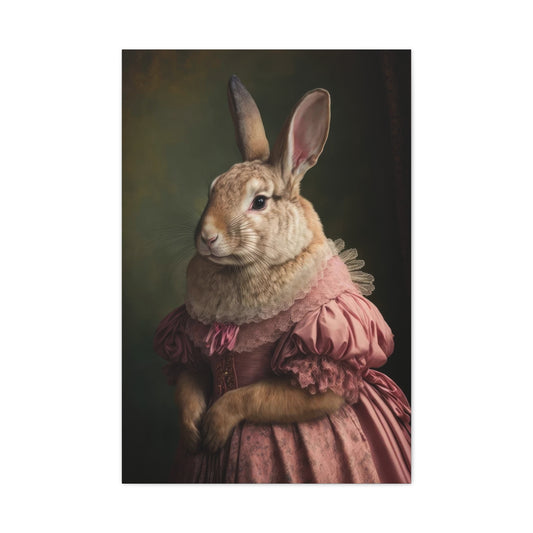The Hidden Science Within the Surface: Unveiling the Role of Sizing in Paper
When we engage with a piece of fine art, whether a delicate watercolor wash or a bold ink drawing, the focus is often drawn to the image, the technique, and the medium. Yet, the very foundation upon which that art is the paper plays a quietly commanding role. Behind the smooth or textured façade of an art sheet lies an intricate science, particularly in the process known as sizing. This critical treatment, often overlooked by the untrained eye, transforms raw paper pulp into a responsive, durable, and expressive surface capable of holding the artist’s vision with integrity.
Paper, at its most basic level, is a web of intertwined fibers derived from materials like cotton, linen, or wood. In their untreated state, these fibers are highly absorbent, akin to a sponge. Without any modification, such paper would readily drink up water, ink, or paint, allowing colors to bleed and marks to blur. For those striving to create controlled, vibrant imagery, this lack of resistance is a significant impediment. The natural absorbency of unmodified paper would lead to dull tones, imprecise lines, and uncontrollable washes. This is where the process of sizing enters the narrative.
Sizing is the art and science of applying specific substances to the paper to modify its absorbency. It acts as a mediator between the pigment and the fibers, offering the artist greater control over how the medium behaves on the surface. By altering surface tension and penetration, sizing allows inks and paints to remain closer to the surface, resulting in sharper lines, richer tones, and more nuanced textures. The difference between a chaotic bleed and a refined stroke often lies in the paper's sizing.
The Two Pillars of Sizing: Internal and External Techniques
In the creation of fine art papers, sizing is typically introduced in two primary methods: internal sizing and external sizing, each offering unique characteristics and contributing differently to the final performance of the paper.
Internal sizing involves adding sizing agents directly to the pulp before the paper is formed. This technique ensures that each fiber is coated from within, creating a uniformly treated sheet where the resistance to moisture is embedded at the molecular level. Commonly used internal sizing agents include alkyl ketene dimer, a synthetic compound engineered to create a waxy barrier within the fiber structure. This embedded treatment provides durability and consistent performance across the sheet. Because it cannot be washed away easily, internal sizing is particularly favored for applications where the paper may be subjected to soaking or repeated washes.
External sizing, on the other hand, is applied after the paper has been formed and dried. This process, often called tub sizing or surface sizing, involves immersing the sheet into a bath of gelatin or other size solutions. The gelatin forms a thin, flexible film over the surface of the paper, creating a distinct tactile quality. This surface layer can dramatically influence how media is absorbed, retained, and manipulated. Artists working with watercolor, ink, or gouache often prefer tub-sized papers due to the increased control and vibrant color payoff they offer.
The gelatin used in tub sizing is typically derived from animal collagen, often a by-product of the meat industry. While some artists and manufacturers seek synthetic or plant-based alternatives for ethical reasons, traditional gelatin sizing remains a benchmark for many high-end art papers due to its superior handling characteristics. It gives the paper a natural resilience and allows water and pigment to interact in complex and beautiful ways.
The degree to which paper is sized also matters greatly. Sizing isn't simply an on-or-off proposition; rather, it's a spectrum. At one end, we find unsized papers, often referred to as waterleaf papers. These sheets are completely absorbent and are commonly used for applications where rapid uptake of liquid is desired, such as blotting or filtering. They soak up moisture instantly, making them unsuitable for most fine art applications but ideal for specific technical or experimental purposes.
Soft-sized papers occupy the middle ground. These sheets have been lightly treated to reduce excessive absorbency without eliminating it entirely. Such papers are often found in newsprint, lower-grade sketch pads, or specific printmaking processes where a bit of absorption helps with ink adhesion and tonal quality. They offer a compromise between flow and control.
At the far end of the spectrum lie hard-sized papers. These are heavily treated to resist water and pigment penetration, creating a surface that holds color vividly and allows for intricate detailing. Hard-sized sheets are essential for techniques that demand precision and brightness, such as watercolor painting, calligraphy, and detailed ink drawing.
Practical Insights for Artists: How Sizing Impacts Creative Expression
Understanding the role of sizing extends beyond theoretical knowledge. For artists, it is a practical concern that directly affects the outcome of their work. Choosing the right kind of sizing for a project is as crucial as selecting the right brush or pigment. Misjudging paper absorbency can result in uneven washes, unexpected bleeding, or lifeless color.
One simple yet telling way to test a paper's sizing is to place a small droplet of clean water on its surface. If the droplet remains as a distinct bead and resists soaking in, the paper is likely hard-sized. If it flattens out slowly or vanishes quickly into the fibers, the paper is either soft-sized or entirely unsized. This basic test can reveal more than any label or description.
Interestingly, some of the highest quality watercolor papers are intentionally over-sized. This technique accounts for the inevitable loss of sizing during preliminary treatments, such as soaking or stretching. However, this additional sizing can make the paper repel water excessively at first, causing pigments to pool or resist even washes. Artists can moderate this by lightly dampening the surface with a sponge before painting, ensuring a more even response.
Maintaining the integrity of the sizing is also essential. Many artists are unaware that common studio habits, such as using unclean soaking tubs or reusing sponges with soap residue, can damage the sizing layer. Soap, in particular, can break down gelatin sizing, rendering even the most carefully selected paper unpredictable. Ensuring that all tools and containers are clean and free from contaminants protects the paper's delicate balance and preserves its intended performance.
Moreover, artists working in mixed media often explore how different degrees of sizing affect the interaction of various materials. For example, combining watercolor with colored pencils on a moderately sized paper can yield fascinating results as the sizing dictates how much pigment is absorbed versus how much sits on the surface. This synergy between paper and medium opens up creative possibilities that extend far beyond the brushstroke.
The evolution of sizing has also led to environmentally conscious innovations. As concerns over sustainability and ethical sourcing grow, paper manufacturers are increasingly exploring plant-based sizing alternatives, such as starches and cellulose derivatives. These innovations aim to offer similar performance to gelatin-based sizing while aligning with vegan and eco-conscious values. Though still emerging in the fine art market, these new solutions hold promise for the future of sustainable art materials.
Ultimately, sizing is not merely a technical detail but a dynamic characteristic that empowers the artist. It shapes how color behaves, how texture is perceived, and how expressive a mark can be. By taking the time to understand and appreciate this foundational aspect of paper, artists gain a deeper connection to their materials and unlock a greater range of creative expression.
The Evolution of Paper Sizing: From Tradition to Innovation
Paper has long been the quiet yet powerful foundation of visual storytelling. Whether through the vibrant washes of watercolor, the precise strokes of calligraphy, or the bold impressions of printmaking, the surface of the paper profoundly influences how media behaves. At the heart of this dynamic is the practice of sizinga process designed to regulate the absorbency of paper and ensure that pigment remains vibrant rather than being dulled by uncontrolled soaking.
Historically, paper sizing was rooted in the use of natural materials, most notably gelatin derived from animal collagen. This organic sizing agent was not only accessible but highly effective, granting paper a surface that resisted immediate absorption and preserved the integrity of applied media. Gelatin's popularity spanned centuries and continents, particularly flourishing in European and Asian papermaking traditions. Today, this time-honored material continues to be revered by fine art paper manufacturers who value authenticity, craftsmanship, and tactile nuance.
The method of applying gelatin sizingespecially through the technique known as tub sizinghas a unique impact on the paper's performance. In this process, individual sheets are immersed in a warm gelatin solution, then dried slowly to allow the material to coat and slightly penetrate the surface. This produces a paper with a soft yet responsive texture, allowing pigments and inks to remain near the surface, enhancing color luminosity and edge definition. Watercolorists, for instance, benefit immensely from this method, as it permits controlled layering, subtle gradations, and vibrant glazes that would otherwise be lost to over-absorption.
While tub sizing with gelatin creates a luxurious surface cherished by traditional artists, it is labor-intensive and costly, making it less feasible for high-volume production. As a result, modern papermaking has embraced synthetic alternatives that offer efficiency, durability, and consistency. One of the most widely adopted synthetic sizing agents today is alkyl ketene dimer (AKD). Unlike gelatin, which is typically applied externally, AKD is added internally during the paper pulping stage. This internal sizing infuses the fibers themselves with hydrophobic properties, offering inherent water resistance throughout the sheet.
AKD internal sizing excels in maintaining structural integrity and is ideal for machine-made papers intended for both artistic and commercial applications. However, it lacks the tactile subtlety and expressive sensitivity found in gelatin-sized paper. To balance performance and artistry, many premium paper manufacturers employ a dual-sizing approachcombining internal AKD sizing with a surface application, either with gelatin or another material. This method produces papers that are both robust and refined, suitable for demanding techniques and diverse artistic styles.
In addition to gelatin and synthetic waxes like AKD, other materials have played crucial roles in the history and present-day practice of paper sizing. Starch-based sizing, for example, is prominent in East Asian paper traditions. Derived from rice or wheat, these starches offer a softer resist, resulting in a paper that absorbs media more gently. While not as water-resistant as gelatin or AKD, starch-sized papers offer a pliable, organic texture that is ideal for brush painting, ink wash techniques, and traditional calligraphy. The feel of such paper is often described as "alive," responding to each stroke with a delicate balance of absorbency and feedback.
Contemporary artists benefit from a wider array of sizing materials and application methods than ever before. This diversity allows for precise tailoring of surface characteristics to suit different media and techniques. For example, a painter who uses multiple layers of glazes may seek out hard-sized paper that resists water long enough to maintain clarity between layers. A printmaker, on the other hand, may desire a more absorbent paper that interacts deeply with ink to produce rich, velvety textures. Even subtle variations in sizing can significantly influence the final appearance of a piece, highlighting the importance of choosing paper as carefully as brushes or pigments.
Factors That Influence Sizing Performance and Paper Behavior
While the chemistry of sizing plays a central role in paper behavior, its performance is not solely determined by material composition. A variety of environmental and procedural factors also shape how paper responds to media over time. One critical factor is climateparticularly humidity. In damp or tropical environments, gelatin-based sizing can soften or degrade, reducing its effectiveness and altering the paper’s absorbency. Conversely, in dry climates, inadequately sized paper may become brittle, leading to cracking or unwanted texture when media is applied.
Artists who work in fluctuating climates often find themselves adapting techniques or storing materials differently to maintain consistency. Proper storage of paper is essential to preserving sizing quality. Ideally, paper should be kept flat in a dry, temperature-stable, acid-free environment. Exposure to excessive heat, light, or moisture can compromise both internal and surface sizing, leading to uneven absorption and unreliable performance. For artists who depend on predictability, such degradation can be especially frustrating.
Even during manufacturing, subtle shifts in environmental conditions can result in variations from batch to batch. Factors such as the purity of water used in sizing, the timing and sequence of applications, and even the ambient humidity during drying can all contribute to how a sheet ultimately behaves. That’s why two papers with similar labels may produce very different results when tested side-by-side. As a result, experienced artists often experiment with several brands and formulations before settling on a paper that aligns with their creative vision.
Another layer of complexity arises from how sizing interacts with specific techniques. For example, in wet-on-wet watercolor painting, paper must remain stable under extended moisture exposure while allowing pigment to spread in controlled ways. A surface that absorbs too quickly may dull colors or prevent natural blending. Conversely, a surface that repels water too aggressively can make it difficult to apply washes evenly. In such cases, the choice of sizingboth in material and methodbecomes pivotal.
It is also worth noting that some artists actively alter the sizing of their paper to better suit their needs. By gently rinsing, sanding, or sponging the surface, artists can reduce the sizing and modify how the paper accepts pigment. These customizations can transform a stiff, glossy surface into one that is more yielding and responsive. This type of personalization reflects the intimate relationship many artists develop with their tools and materialsone based not just on utility, but on dialogue, experimentation, and evolution.
The Artistic Impact and Legacy of Paper Sizing
Paper sizing may seem like a technical footnote in the grand narrative of artmaking, but in reality, it is a central character that shapes the very language of visual expression. A well-sized sheet of paper serves as both collaborator and canvas, offering the artist control over timing, absorption, and nuance. In watercolor, it creates opportunities for soft transitions and crisp edges. In ink, it maintains the boldness of each stroke. In printmaking, it balances absorption and impression to bring out the richness of each texture.
There is an unmistakable sensual quality to traditionally sized papers. The way a brush glides across the surface, the way water pools without sinking, and the way light dances across fibers are experiences rooted in craft. They are the result of careful material choices and skilled execution, carried out by artisans who view papermaking as both science and art. For many artists, this connection to tradition is as important as performance. Using a sheet of paper that has been carefully sized by hand can lend a sense of continuity and reverence to the creative process.
Modern innovations have undoubtedly made paper sizing more consistent and accessible. Machine-sized papers with synthetic agents offer reliability and affordability that benefit artists at all levels. Yet, despite these advances, there remains a deep appreciation for the unique qualities of traditionally sized papers. They offer not just a surface to work on, but an experience that engages the senses and deepens the creative act.
Ultimately, the best paper for an artist is the one that aligns with their vision, complements their technique, and responds intuitively to their touch. Whether that paper is gelatin-sized by hand, internally treated with AKD, or finished with starch from a rural mill in Asia, its sizing is the silent partner in every masterpiece. Understanding the role of sizing in paper allows artists to make informed choices and cultivate a deeper relationship with their materials.
The Crucial Role of Paper Sizing in Artistic Expression
When it comes to visual arts, few materials are as fundamentally important as the paper itself. Often underestimated, the sizing of paper plays an invisible yet pivotal role in shaping the outcome of an artwork. More than just a manufacturing step, sizing is the unseen mediator between artist and medium, deeply influencing the absorbency, texture, and durability of the paper. For artists across disciplineswhether painting with watercolour, sketching with graphite, inking calligraphy, or layering mixed media presence and type of sizing can either support creative freedom or become a barrier to artistic flow.
At its core, sizing is the treatment of paper to regulate its absorbency. It ensures that pigment, ink, or graphite doesn’t simply sink into the fibers and disappear. This controlled absorbency is vital because it gives artists the ability to manipulate their materials on the surface before they are absorbed or fixed. There are two primary forms of sizing: internal (added during the pulp stage) and surface or external sizing (applied to the finished sheet). Each type plays a distinct role, and their combination provides papers with varying degrees of resistance and response, catering to different media and techniques.
For watercolor artists, sizing isn’t just a technical consideration’s a creative necessity. Hard-sized papers, especially those treated with gelatin via tub sizing, are the gold standard in professional watercolor work. These papers resist immediate absorption, allowing paint to sit atop the surface longer. This delay grants artists crucial time to blend colors, create washes, and control gradients. The sizing acts like a silent guide, helping colors diffuse gently rather than chaotically. Without proper sizing, watercolor behaves unpredictably, leading to uncontrolled bleeds and a muddy appearance that diminishes the intended effect.
Beyond just initial washes, the strength and resilience of well-sized paper become even more evident during layering. Watercolor painting often involves building up transparent layers to achieve depth and luminosity. Papers with both internal and surface sizing can handle repeated brushwork without buckling, pilling, or breaking down. This stability ensures that each layer remains crisp, and the underlying structure of the paper stays intact throughout the painting process. On the other hand, inadequately sized or unsized sheets are prone to deformation, making refined work nearly impossible.
Medium-Specific Interactions with Sizing
Each art medium places unique demands on paper, and the type and degree of sizing must align with the specific needs of the chosen technique. For ink-based media such as dip pen drawing, fine-line illustration, or calligraphy, the surface of the paper must strike a balance between smoothness and grip. A firm, well-sized sheet prevents feathering and ensures that ink lines remain clean and defined. Artists working in calligraphy, for example, require consistent ink flow and edge sharpness. A paper lacking sufficient surface sizing can cause the ink to bleed unpredictably or absorb unevenly, undermining the fluidity and control essential to beautiful lettering.
The experience of drawing with graphite, charcoal, or colored pencil is also shaped dramatically by sizing. Unsized or minimally sized papers often feel too soft or slick, with insufficient tooth to grab dry media effectively. This results in tools gliding too freely, leading to uneven application and diminished tonal control. Conversely, moderately sized papers with a subtle texture offer the best conditions for these media. The fibers hold onto the pigment particles while still allowing for subtle blending and layering. This is particularly vital for colored pencil techniques that require gradual transitions and intricate detail.
Pastel artists also benefit from specific sizing characteristics, although the focus shifts slightly. Pastels need a textured surface to grip onto, and while this is often achieved through coatings or specially formulated grounds, the underlying sizing still plays a critical supporting role. A lightweight paper offers enough structural stability to support layering without compromising texture. Without this subtle reinforcement, pastel particles may fall away too easily, and the paper itself could crumble under the demands of intense application.
Printmakers encounter a different set of challenges. Techniques like intaglio, lithography, and relief printing involve high pressures and require the paper to accept ink from intricate plates or blocks. In these cases, a soft-sized paper is often preferred. It must be absorbent enough to draw ink from the deepest recesses of an etched plate while remaining strong enough to endure the compressive forces of the press. Papers that are too heavily sized may resist ink transfer, while unsized papers risk tearing or distortion. Handmade or mould-made papers with carefully calibrated sizing levels offer the ideal middle ground, enabling detailed, high-contrast prints with minimal loss of fidelity.
Artists who work across multiple mediacombining watercolor with ink, collage with acrylic, or graphite with gouacheneed a substrate that is both versatile and resilient. Mixed media often subjects the paper to wet applications, abrasions, layering, and adhesives. For these applications, a dual-sized paper with both internal and external sizing offers the necessary balance. Internal sizing provides core stability and prevents fibers from breaking down, while surface sizing creates a durable working area that can withstand multiple layers without becoming saturated. This ensures that each added material adheres well and remains vibrant over time.
Mastering Paper Selection Through Sizing Knowledge
As artists refine their techniques and explore new creative territories, understanding paper sizing becomes a crucial part of their toolkit. Every brushstroke, pencil mark, or ink line is influenced by how the paper has been prepared. More importantly, the compatibility between media and surface isn’t always obvious until an artwork is underway. Having a foundational understanding of how sizing impacts absorbency, surface texture, and durability can save artists time, frustration, and the loss of valuable work.
Even within the same medium, different approaches demand different types of sizing. Take watercolor, for example: a wet-on-wet technique benefits from a hard-sized surface that restrains pigment movement, while a dry-on-dry or drybrush method may function better on a lightly sized or more absorbent sheet that encourages textural effects. Similarly, in printmaking, the needs of screen printingwhere ink sits on the surfacediffer greatly from the deep embossing of intaglio work.
For artists who wish to take greater control of their materials, modifying the sizing of their paper is a viable, though advanced, option. This might involve carefully removing surface sizing to increase absorbency for certain techniques or applying a custom sizing agentsuch as homemade gelatin or starch tailor the paper’s response. These modifications allow artists to fine-tune the interaction between tool and surface but require skill and a deep understanding of the materials involved. Missteps can irreparably alter the paper’s properties, so experimentation is best done on test sheets before applying techniques to final works.
In a world where new artistic methods and hybrid practices are constantly emerging, paper manufacturers have begun to offer increasingly specialized surfaces. Still, the artist’s awareness remains the most powerful factor in successful material selection. Knowing how sizing interacts with pigment and pressure, with line and layering, can mean the difference between frustration and fulfillment in the creative process.
Ultimately, sizing is more than a technical specification is the unsung hero of paper-based art. It supports clarity in ink, resilience in wash, structure in pastel, and durability in print. The better artists understand this hidden dimension, the more confidently they can select the right paper, adapt their techniques, and push their practice forward. Mastery of the medium begins not just with skill in the hand, but with knowledge of the very surface beneath it.
The Subtle Art of Evaluating Sizing: How to Read Your Paper Before You Paint
In the world of visual arts, the character of paper plays a pivotal role in shaping the final artwork. Among the many factors influencing paper behavior, sizing stands as one of the most critical and yet often overlooked. For artists working with water-based media, understanding how to evaluate the sizing of a new sheet of paper is as foundational as choosing the right brush or pigment. It’s not just a technical consideration’s a practical ritual that sets the tone for everything that follows.
When encountering a fresh sheet, the first question an artist should ask isn’t about weight or texture’s about absorbency. You can learn a great deal through a simple yet effective method: place a droplet of clean water on the paper’s surface and observe. If the droplet retains its round form and sits on the surface, refusing to absorb quickly, then the sheet is hard-sized. On the other hand, if the water flattens or soaks in without resistance, the sizing is softer or insufficient. This droplet test, while elementary, provides immediate insight into how a sheet will react to washes, glazes, and layering.
Still, the story of sizing isn’t always visible to the naked eye. Some manufacturers engineer paper with extra internal or surface sizing specifically to offset the degradation that occurs during stretching. For watercolorists who soak and stretch paper to prevent buckling, this is a crucial detail. Soaking can draw sizing out of the surface, particularly if the process is rushed or the tools used are not clean. Overlooking this factor can result in unpredictable pigment behavior and frustration during painting.
The soaking process deserves special care. Tools usedsuch as containers, brushes, or spongesmust be impeccably clean. Even trace amounts of soap or oil can act as solvents that break down sizing, leaving the surface uneven or blotchy. Ideally, artists should set aside dedicated tools for stretching alone and never repurpose household items without thorough cleaning. This small act of diligence safeguards the performance of the paper and maintains the surface consistency vital for watercolor and ink work.
When sizing is inadvertently compromised, the changes can be immediately noticeable. Pigments may bleed, feather, or sink too deeply into the paper’s fibers, making glazing and layering unpredictable. In some cases, surface abrasion may occur when attempting to rework previously painted areas. For seasoned artists, a partial remedy lies in the careful reapplication of a sizing agenttypically a diluted gelatin solution. However, this technique requires precision and is best tested on scraps or practice sheets before being applied to finished work. Restoring the integrity of sizing is possible, but prevention is always the better path.
Preserving Sizing Through Proper Storage and Handling
Sizing is not a static quality is vulnerable to environmental conditions and physical handling. Artists who value consistency and longevity in their materials must consider how to properly store and handle paper to preserve its sizing over time. Paper, though seemingly inert, is highly reactive to changes in humidity, temperature, and contamination. And the impact of these environmental variables can subtly alter the way paper behaves under the brush.
High humidity is particularly harmful. It can soften or completely dissolve surface sizing, rendering a previously crisp, responsive sheet into one that absorbs pigment too quickly and unpredictably. On the flip side, excessively dry environments can desiccate the paper, making it brittle and potentially leading to cracking or surface damage during handling or painting. Ideally, paper should be stored in a stable, climate-controlled space, shielded from extremes. A flat storage system using drawers or archival portfolios is best, especially when paired with acid-free interleaving sheets that protect surfaces from physical contact and friction.
For artists working in studios without optimal humidity control, silica packets or small humidifiers can help regulate conditions within storage containers. It may seem excessive, but over time, these precautions preserve not only the sizing but the structural integrity of the entire sheet.
The way artists physically handle their paper is also a major factor in preserving sizing. Skin oils, perspiration, and even microscopic debris from hands can subtly interact with the surface of gelatin-sized papers. These interactions may cause uneven pigment application or staining, especially under transparent washes. Using clean cotton gloves while handling paper or, at the very least, touching only the edges, helps maintain a consistent surface. Artists who prefer a tactile connection with their materials can safeguard their work with frequent handwashing and a clutter-free workspace.
Furthermore, for those who store papers for long periods, periodic inspection is advisable. Over time, even stored paper can develop surface inconsistencies due to pressure, environmental shifts, or contamination. By periodically testing stored sheetsagain, with the simple water droplet methodartists can identify any changes before beginning important work.
Some artists even take their paper handling to the next level by maintaining a catalog of their materials. They track how different brands and batches respond to specific conditions, annotate purchase dates, and even make sample swatches with notes about pigment behavior. This kind of meticulous documentation transforms paper handling from a routine to a refined practice and builds a personalized library of trusted surfaces for future projects.
Customizing and Controlling Sizing to Match Creative Intent
While commercial papers are typically manufactured with carefully calibrated sizing, some artists find that tweaking or customizing sizing can unlock new creative possibilities. This is especially relevant for those working in experimental or non-traditional media or for artists whose preferred techniques require unusual surface interactions.
For instance, a hard sized paper might cause watercolors to pool excessively, creating unintended blooms or resisting fine control in washes. In such cases, a light sponging with clean water can subtly soften the sizing without stripping it entirely. This micro-adjustment enables smoother transitions, more even coverage, and improved control over diffusion.
On the other end of the spectrum, some artists may find their paper too absorbent, especially when attempting techniques that demand crisp edges or vibrant surface color. In these cases, a very thin layer of diluted gelatin or synthetic sizing can be applied to restore a moderate surface resistance. Though rarely practiced, this method reflects the depth of interaction possible between artist and substrate. It turns the paper into an evolving element of the creative processmalleable, interactive, and entirely personal.
These interventions do carry risk. They require practice, testing, and a deep familiarity with how sizing behaves under pressure. Still, they exemplify the kind of intimate material knowledge that defines mastery. Artists who develop this level of engagement with their paper can troubleshoot in real time, adapt to unexpected behavior, and even repurpose materials that might otherwise be discarded.
Consistency remains a key concern. Manufacturing processes can vary slightly between batcheseven within the same product line. As such, many experienced artists batch-test sheets upon acquisition. They note the performance characteristics and document how each batch behaves under washes, drybrush, lifting, and glazing. By doing so, they create a tailored workflow that anticipates material behavior rather than reacting to surprises mid-project.
For conservators, collectors, and curators, this level of understanding also offers substantial value. Artworks created on improperly sized or degraded paper often display early signs of deterioration. Pigments may fade unevenly, outlines may feather, and the paper’s integrity may weaken. By identifying the hallmarks of good sizingwhether through close inspection or laboratory analysis, those charged with preserving art can better interpret an artist’s methods and protect works from preventable decay.
Ultimately, the quality of a paper’s sizing plays a defining role in the final artwork. It affects how light interacts with pigment, how transparent layers build upon each other, and how well the surface resists or accepts different techniques. Whether it's calligraphic detail, saturated color fields, or layered texture, the sizing supports the artist’s vision at every turn.
Artists who invest time in understanding, testing, and preserving sizing are not simply protecting their materialsthey are expanding their expressive range. The interaction between brush, pigment, and paper becomes a dynamic dialogue, where the substrate is not passive, but a collaborative participant in the creative act. Through careful handling, intelligent customization, and consistent practice, the paper becomes more than a surface. It becomes an ally.
























